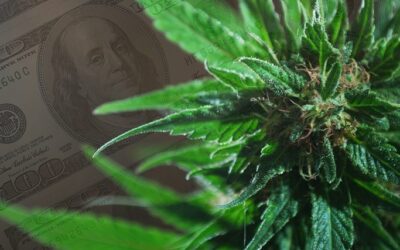The United States is facing an opioid epidemic, but a new survey has found that medical marijuana can help patients significantly reduce their opioid pain medication intake, thereby decreasing their risk of painkiller abuse and overdose.
Just two years ago, over 1.9 million Americans had a substance abuse disorder involving prescription painkillers, with nearly 19,000 cases ending in death. Despite new research showing this dangerous trend, prescription painkiller use is still on the rise.
“This epidemic touches all corners of our nation and is devastating individual lives, communities and our nation,” said FDA Commissioner Robert Califf during a briefing on the new regulations with reporters.
Opioid pain medications, like Vicodin and OxyContin, carry a high risk for abuse, addiction, overdose, and even death, but results of a new study suggest that cannabis could be the answer to the epidemic of opioid addiction. In the survey published by the The Journal of Pain, patients using medical marijuana to manage their chronic pain reduced their opioid intake by 64 percent.
The study’s results were released the same month that the Food and Drug Administration (FDA) announced that all fast-acting opioid pain medicines will be required to carry black-box health warnings about the drug’s risks. Prescriptions for opioids, which include oxycodone, hydrocodone, and morphine, have quadrupled since 1999. However, opioids are highly addictive and can be dangerous when abused. According to the Centers for Disease Control and Prevention, “78 Americans die every day from an opioid overdose.”
The black-box warnings have the potential of influencing the prescription methodology of physicians. Medical marijuana, which has long been established as an effective analgesic agent, could be a good alternative to dangerous opiate and opioid based medication for doctors in Washington D.C. and the 23 states that have established medical marijuana legislation.
In the study, the researchers surveyed 185 medical marijuana cardholders in Ann Arbor, Michigan. The surveys were conducted from November 2013 to February 2015 and examined the patients’ medication habits before and after they began using cannabis.
“To have people report such a huge decrease in their opiate use was definitely a surprise,” said Kevin Boehnke, doctoral student in the School of Public Health’s Department of Environmental Health Sciences at the University of Michigan and lead author of the study. The patients also reported experiencing significantly fewer side effects from the pain medications they were taking while they were using cannabis. In addition, they reported a 45 percent increase in quality of life.
Opioids aren’t just dangerous because of their addiction risk. Even patients who follow the prescribed regimen are at risk for overdose. With repeated opioid use, tolerance increases and patients must take ever higher doses to acquire effective pain relief, leading to physical dependence.
Another recent study, released in February from Israel and published in The Clinical Journal of Pain, also found that medical cannabis significantly reduced opioid use (44 percent) while simultaneously improving pain and functional outcome.
Just last month, Senator Elizabeth Warren wrote a publicized letter to the Director of the Centers for Disease Control and Prevention Dr. Thomas Friedan to express her concern about the opioid overdose epidemic and to recommend looking more into how the legalization of medical and recreational marijuana could make a positive impact. The findings of recent studies should strengthen her argument.
“We’re in the midst of an opioid epidemic and we need to figure out what to do about it,” said Boehnke. “I’m hoping our research continues a conversation of cannabis as a potential alternative for opioids.”
Eighteen of the 23 states with medical marijuana legislation have approved cannabis specifically to treat pain. Medical marijuana is likely to expand to more states in 2016, as there are active campaigns working to bring initiatives to voters this November. As medical marijuana programs continue to expand across the country, the overall use of painkillers, and thus addiction and abuse, should begin to decline.
This article may contain certain forward-looking statements and information, as defined within the meaning of Section 27A of the Securities Act of 1933 and Section 21E of the Securities Exchange Act of 1934, and is subject to the Safe Harbor created by those sections. This material contains statements about expected future events and/or financial results that are forward-looking in nature and subject to risks and uncertainties. Such forward-looking statements by definition involve risks, uncertainties.






